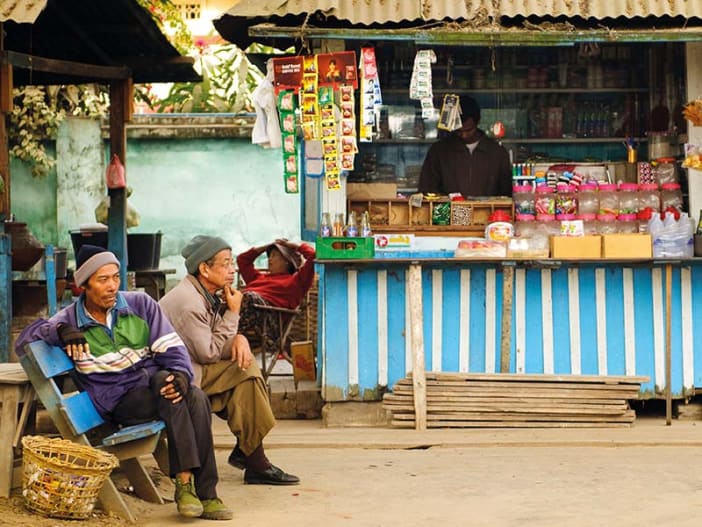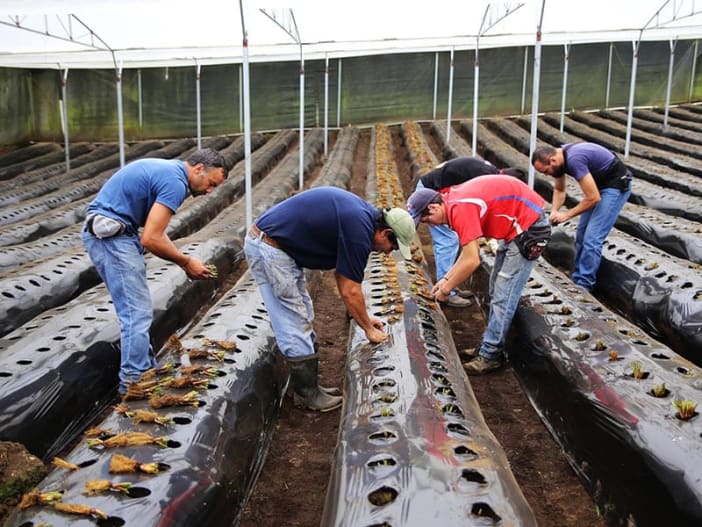by Rose Collins.
Many people dream of new ways of earning a living or making a little more money. But as we all know, it is usually very difficult to start up a new business. This issue looks at micro enterprises (small scale businesses) and gives advice on how to change a good idea into a business.
Setting up production
Every year many good ideas fail because groups do not take time to plan before they begin. If you want to set up a new group to produce any kind of item, there are some questions you first need to consider and find answers for:
Market Do we know if there is a demand for the products being suggested? To answer this question you will need to carry out a basic market survey.
Skills What kind of products do we have the skills to make? List your combined skills.
Competition Who else is making the same products? What do we know about them?
Facilities Where are we going to make our products? What equipment do we need?
Marketing Do any group members understand how to price our products? If not, how can we gain experience in this?
Legal situation What legal structure will our group need? Do we need to be registered for tax or other purposes? Do we need a constitution? Who will organise this and how much will it all cost? Where can we get advice?
Records Do any group members have a basic understanding of record keeping? If not, how can we find training in this?
Storage and transport How are we going to store, pack and transport our products?
Accounts How are we going to deal with money? Will we need to open a bank account? What will our terms of payment be: cash, one week or one month?
Work out a budget for your first year of trading so you are aware of the likely costs and then compare this with what you are likely to earn in income. If there are similar production groups in your area, visit and learn from their experience and problems. Remember – the first year will be the most difficult as this will include all the setting-up costs. You will need to consider the cost of raw materials, labour, equipment, packaging, transport and rent of facilities. Make sure you can survive this year before you start or you will waste a lot of money, heartache and hard work with little guarantee of success.
The market place
So many times I arrive at small producer groups and am asked to find a market for all the products they have made. Sadly small producers often find their products cannot be sold because they have ignored the simple rule of supply and demand…
Before making goods, first find out if enough people will want to buy them.
Never make products and then hope you will be able to sell them. You will just waste time, energy and money and end up with stocks of unwanted goods. First carry out a market survey. This doesn’t have to be complicated. Don’t rely on the advice of friends who may want to encourage you. Visit local markets and talk to stall holders, visit nearby towns and talk to shop owners. Investigate markets further away if necessary. What products sell well and are always in demand?
New designs
Coming up with new ideas for designs, services or food products might seem quite difficult. Think of designing new products as an enjoyable journey. When we travel somewhere new, we usually ask for directions and along the way we might stop and ask for more directions. Your final destination is the finished product, but to reach there you will need to ask for directions (back to the market survey) and stop to consider advice about some trial samples. Consider these points:
- Look around you with ‘new’ eyes. We often miss ideas that are all around us. Look at nature for ideas of colour, shape and texture. Think how these ideas could be used in a new product.
- Look at everyday products and think how you could change them to make them more interesting.
- Look at books and magazines if available. Visit shops in large towns if possible.
- Always refer back to your market survey. Never try and develop a new product unless you are sure it will sell well.
Maybe you are already producing goods which sold well in the past but recently demand has reduced. Maybe you can improve orders by making a few changes or introducing some new products. Here are some ideas:
- Add colour or change the colour of the product.
- Change the size or appearance of the product.
- Add new raw materials to improve the product.
- Re-design the product to include new design features which customers have requested.
- Change the way your products are displayed. Certainly if you sell them yourselves in a small shop or stall, you should do this on a regular basis.
- Check your prices.
Quality control
Quality control should never be ignored. Once you know where your products will be sold, carefully check the quality at all stages. Your customers will want value for money and will not continue to support you if your goods are of poor quality. However, you also have to keep a balance between high quality and costs.
If you have to buy very expensive raw materials your prices may increase so much that people no longer buy your products.
If you have a large group of workers, each must clearly understand the quality levels expected of them. They must know from the start that poor quality work will not be accepted. Set standards, make a checklist and train workers if necessary. Make spot checks without warning. Give your workers reference numbers so you can easily tell who is responsible for which product. Encourage and reward workers who consistently produce high quality goods.
If you are exporting goods, quality control is even more important. Many countries have Trading Standard regulations which have to be followed. Otherwise orders could be cancelled or goods either returned or not accepted for payment.
Quality control includes many things as well as the way products are put together. For example, if you use dyes, are they colour-fast? If you buy raw foods, are they contaminated with pesticides? If you add fittings or accessories to your products, are they of good quality? Be strict with your suppliers of raw materials if you think they are trying to sell you poor quality supplies.
Store products in dry, clean areas where they will be protected from damage by water or damp and from pests such as rats or weevils. Make sure your packaging is good. Producers often give this little attention, but poor quality packaging may result in broken or damaged goods which cannot be sold.
Customers will notice if your goods are of high quality and you will build a reputation for reliable products. This may prove essential in the future, especially if other producers begin to compete with you.
It is your income that will be affected if you allow poor quality goods to be sold. Stay in control and make sure that you know and understand the quality expected by your customers. You will be known by the fruit of your labours.
Rose Collins is a small business consultant for Tearfund based in Singapore. Her address is c/o Barton Associates, 15-01 Golden Mile Tower, 6001 Beach Road, Singapore.









